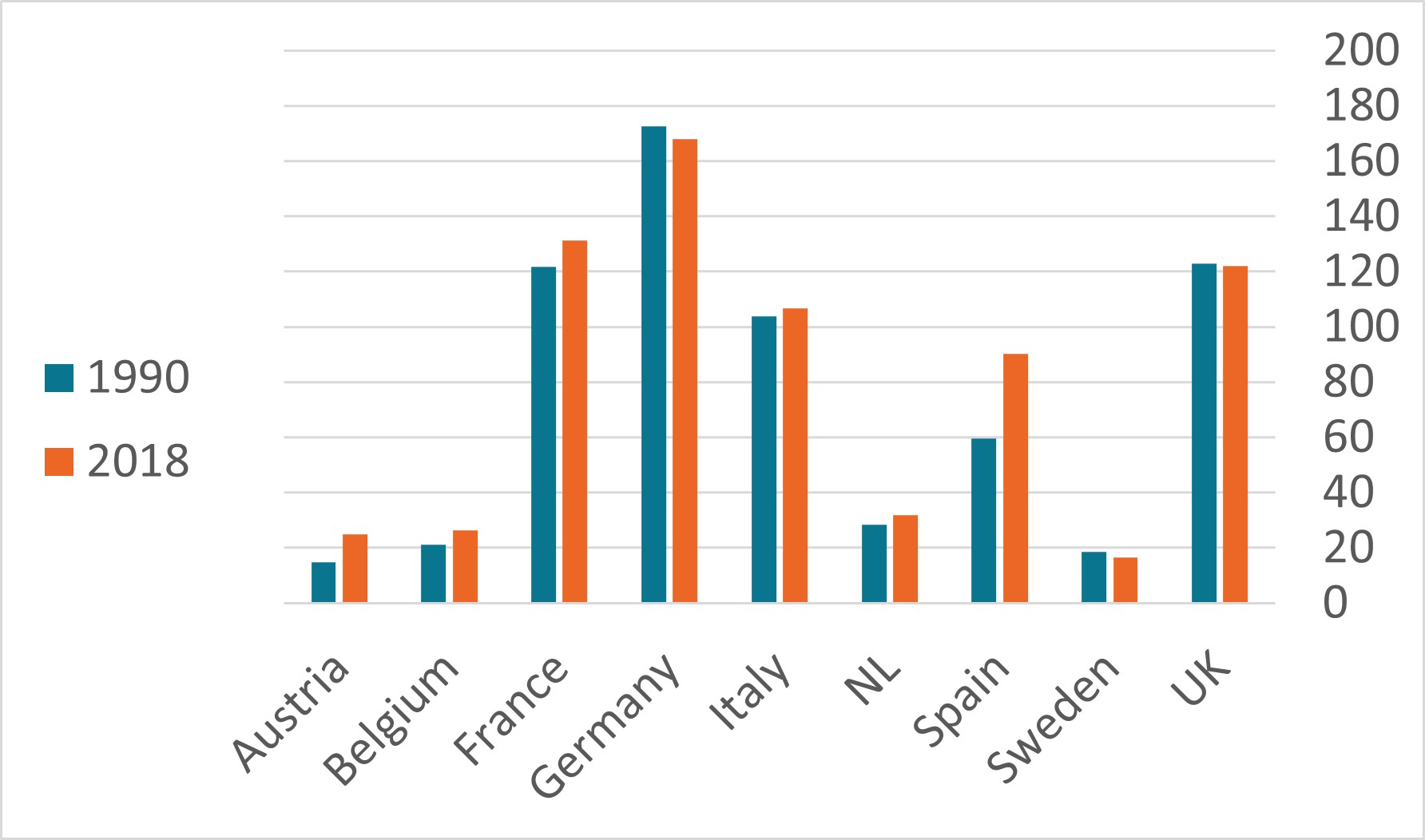Europe’s CO2 emissions from transport grew steadily from 2014 to 2019. (And after a disruption in 2020, they’re heading right back for another increase in 2021.) It may not be a surprise that just nine EU countries produce 80% of these emissions – but we wanted to dive in deeper to help you understand what’s really happening.
So, using two of our databases here at Enerdata (Odyssee and Global Energy and CO2) we explored the transition to less carbon-intensive transport, and created the following report.
The report zeroes in on four main levers of change: energy efficiency, fuel substitution, modal shift, and transport demand, while also highlighting some best practices for decarbonising transport.
CO2 emissions of transport (MtCO2)

Source: Enerdata, Odyssee database, Global Energy and CO2 database
ENERGY EFFICIENCY
The main target for car energy efficiency progress are the new vehicles. But it results with a minimal impact due to the existing fleet. In the report, you can access to all the details, including:
- the impact of the SUV trend on the energy efficiency progress
- the countries working best to meet the energy efficiency objective
For the road freight transport, the energy efficiency has frozen since 2007.
FUEL SUBSTITUTION
In average, the share of decarbonised sources in passenger and good transport has increased and some countries present strong engagement through financial and fiscal measures to support the electric vehicle penetration and the charging station deployment. But the share of EVs in car fleet is still negligible for most countries.
MODAL SHIFT
For freight, a few countries have experienced a significant modal shift from road to other modes.
For passengers, no significant shift was observed since 2010 in most countries. Mobility in public transport has slightly increased, but the share of each mode remains the same.
TRANSPORT DEMAND
Passenger mobility is decreasing since 2000 only in UK and Spain.
CONCLUSION
Two country ranking are implemented to check country performances on the level and trend of the following indicators: energy efficiency, fuel substitution, modal shift, and transport demand. The top three is the same in both ranking.
 Energy and Climate Databases
Energy and Climate Databases Market Analysis
Market Analysis